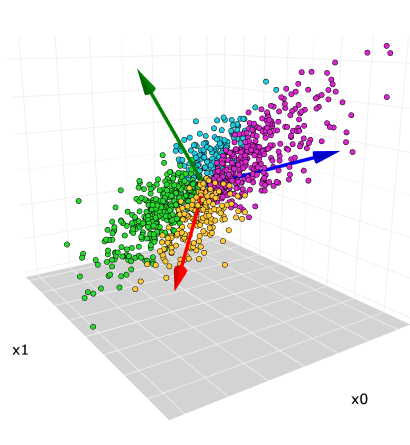
Principal component analysis (PCA) on temporal changes of soil health indicators
Fakher Kardoni(1*)
(1) Young Researchers and Elite Club, Ahvaz Branch, Islamic Azad University, Ahvaz, Iran
(*) Corresponding Author
Abstract
Soil health indicators are related to environmental factors, such as nutrient management, crop practices, different cropping systems, and biodiversity. 14 soil health indicators were measured and compared in our study to clarify the impact of different cropping system on soil quality. The primary comparisons were carried out among perennial plants, annual plants, and cover cropping, with an examination of the tillage system and fertilization taken into account during the analysis. Multivariant analysis recorded that the most promising indicators of soil health that related to soil quality and health were organic carbon (OC), total carbon (TC), followed by fall soil total nitrogen (TN). The main factor for clustering treatments based on indicators was N fertilization according to Euclidean distance that was applied to measure similarity of the groups. Although perennials and cover crops recorded more carbon sequestration and TC improvement, corn crops showed the worse impact on soil pH and bulk density (BD). Non-tillage practices significantly increased wet aggregate and soil moisture. The combination of TC field measurements with long-term cropping systems information has improved our understanding of how different cropping practices influence SOC improvement in soil full profile. It would develop appropriate and cost-effective agricultural management activities, maintain or improve carbon soil accumulation to guide farmer decision making, and ultimately advance food and nutritional security.
Keywords
Full Text:
PDFReferences
Agahi, K., Ahmadi J., Oghan, H. A., Fotokian, M. H., and Orang, S.F. (2020). Analysis of genotype × environment interaction for seed yield in spring oilseed rape using the AMMI model. Crop Breeding and Applied Biotechnology, 20(1), e26502012.
Ajay, B. C., Aravind, J., Fiyaz, R. A., Kumar, N., Lal, C., Kona, P., Dagla, M. C., and Bera, S. K. (2019). Rectification of modified AMMI stability value (MASV). Indian J Genet, 79(4), pp. 726–731.
Ajay, B.C., Bera, S.K., Singh, A.L., Kumar, N., Gangadhar, K., and Kona, P. (2020). Evaluation of Genotype × Environment interaction and yield stability analysis in peanut under phosphorus stress condition using stability Pprameters of AMMI model. Agric Res, 9, pp. 477–486.
Ashwini, K.V.R., Ramesh, S., and Sunitha, N.C. (2021). Comparative BLUP, YREM-based performance and AMMI model-based stability of horse gram [Macrotyloma uniflorum (Lam.) Verdc.] genotypes differing in growth habit. Genet Resour Crop Evol.,68, pp. 457–467.
Bocianowski, J., Niemann, J., and Nowosad, K. (2019). Genotype-by environment interaction for seed quality traits in interspecific cross-derived Brassica lines using additive main effects and multiplicative interaction model. Euphytica, 215(7), pp. 1–13.
Mohammadi, M., Sharifi, P., Karimizadeh, R., Jafarby J.A., Khanzadeh, H., Hosseinpour, T., Poursiabidi, M.M., Roustaii, M., Hassanpour, H.M., and Mohammadi, P. (2015). Stability of grain yield of durum wheat genotypes by AMMI model. Agric For, 61(3), pp. 181–193.
Olivoto, T., Lucio A.Dal’Col, Gonzalez, Silva, J.A., and da, Marchioro, V.S .(2019). Mean performance and stability in multi-environment trials I: Combining features of AMMI and BLUP techniques. Agron J, 111, pp.1–12
Oyekunle, M., Menkir, A., Mani, H., Olaoye, G., Usman, I.S., Ado, S. (2017). Stability analysis of maize cultivars adapted to tropical environments using AMMI analysis. Cereal Res Commun, 45, pp. 336–345.
Resende, M.D.V, and Duarte, J.B. (2007). Precision and quality control in variety trials. Pesquisa Agropecuaria Tropical, 37, pp. 182–194.
Tekdal, S., and Kendal, E. (2018). AMMI Model to assess durum wheat genotypes in multi-environment trials. J Agr Sci Tech, 20, pp. 153–166.
Zali, H., Farshadfa,r E., Sabaghpour, S.H., and Karimizadeh, R.(2012). Evaluation of genotype × environment interaction in chickpea using measures of stability from AMMI model. Ann Biol Res, 3, pp. 3126–3136.
Article Metrics
Refbacks
- There are currently no refbacks.
Ilmu Pertanian (Agricultural Science) ISSN 0126-4214 (print), ISSN 2527-7162 (online) is published by Faculty of Agriculture Universitas Gadjah Mada collaboration with Perhimpunan Sarjana Pertanian Indonesia (PISPI) and licensed under a Creative Commons Attribution-ShareAlike 4.0 International License.












_2025_-_kecil_.png)
_2024_kecil_2.png)
